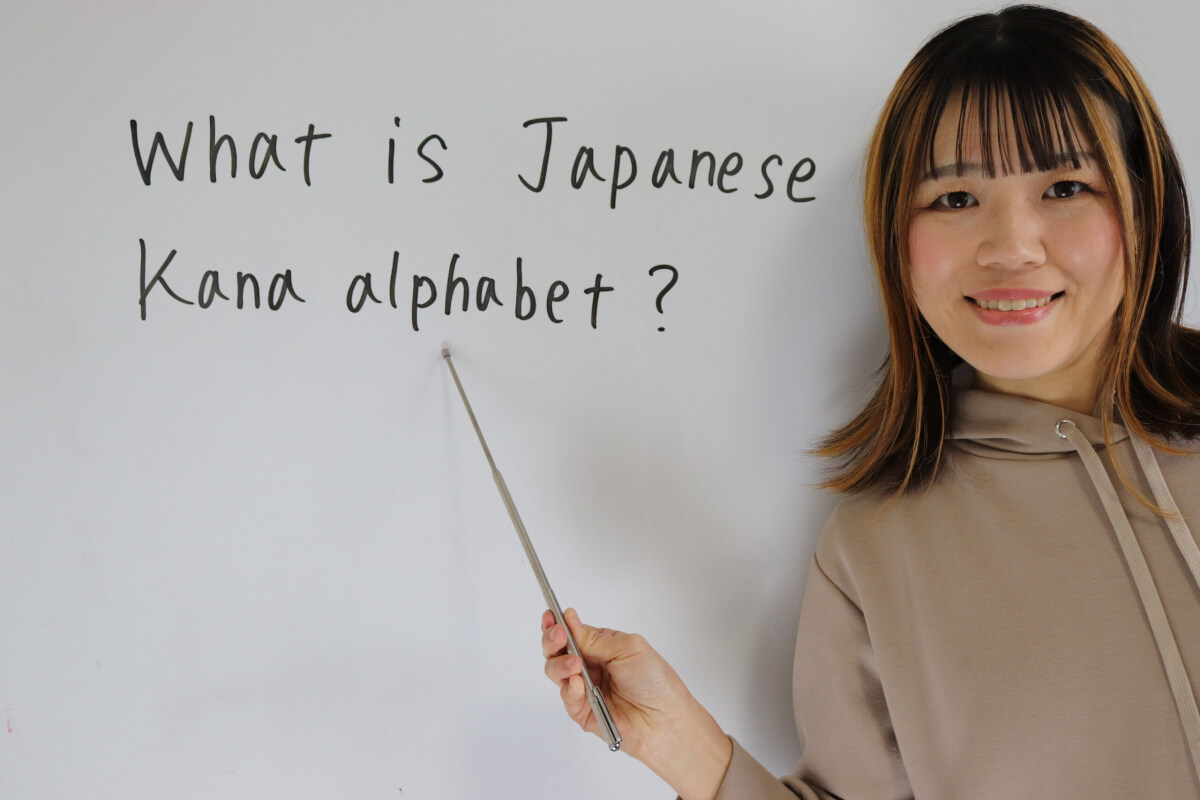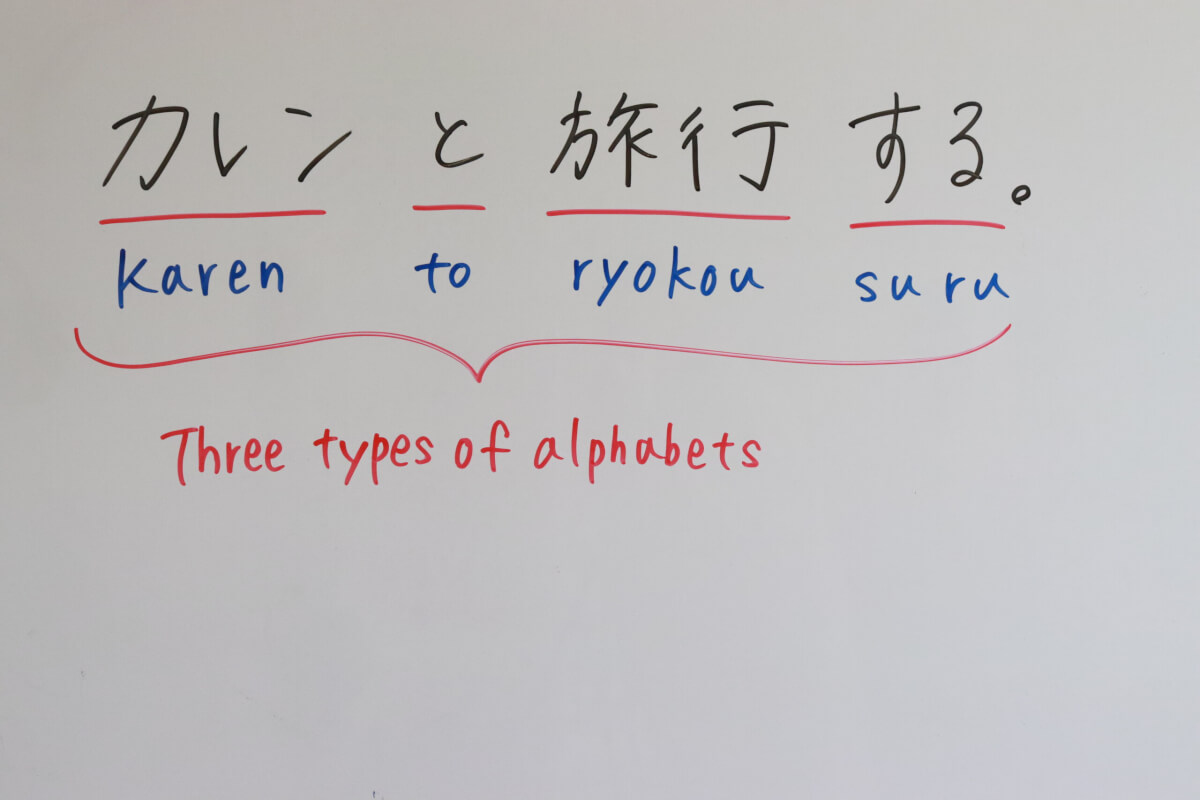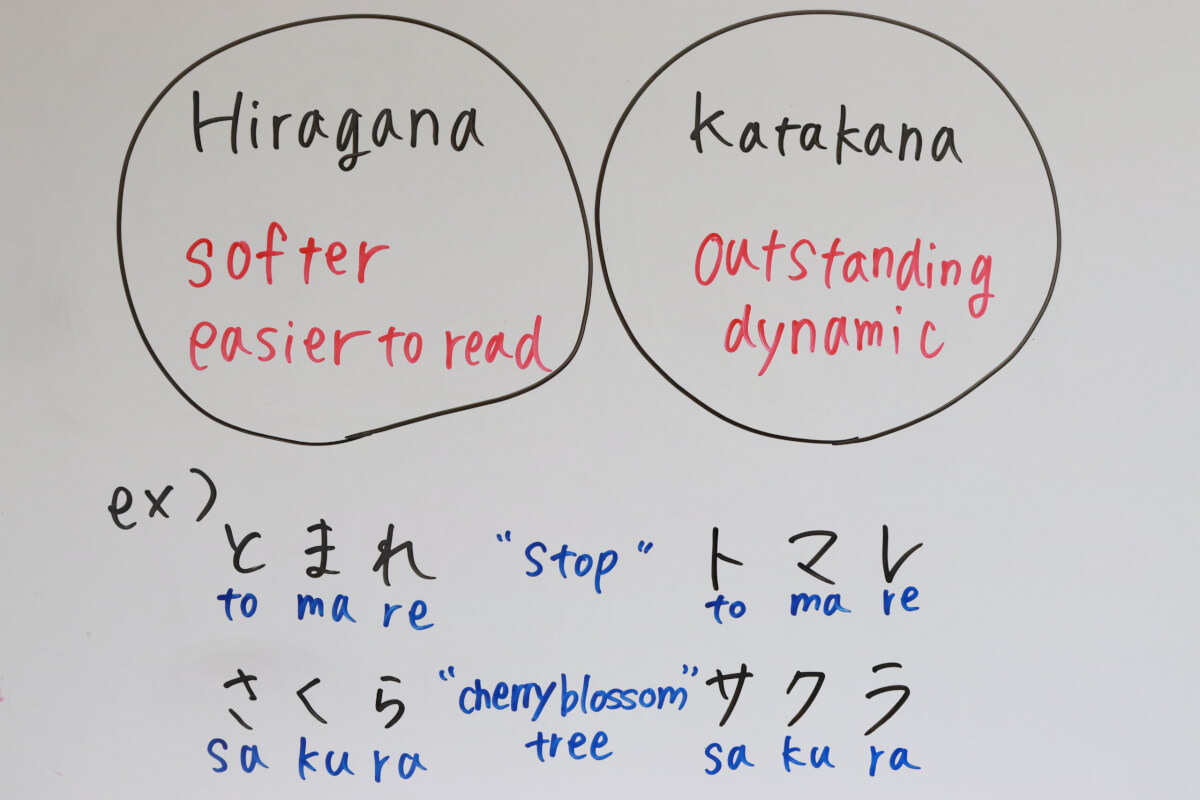- Release Date:
What is Japanese Kana alphabet?

If you have ever seen the Japanese language, you will notice an array of letters with different shapes. For example, "カレンと旅行する" Can you see the difference in the letters in this sentence? Today, I would like to write about the Japanese alphabet.
What is Kana alphabet?
First, let's break down the above sentence: "カレンと旅行する". In fact, there are three Japanese alphabets in it.

This sentence is structured like this:
- カレン [Katakana] /Karen/ "female name"
- と [Hiragana] /to/ "particle: with"
- 旅行 [Kanji] /ryo kou/ "travel: noun"
- する [Hiragana] /suru/ "to do: verb"
Kana characters are those Hiragana and Katakana: カレン, と, する. カレン is Katakana, and と & する are Hiragana. 旅行 is Kanji(Chinese character). The Japanese language has three alphabets: Hiragana, Katakana, and Kanji, so Kana alphabets are other than Chinese alphabet in Japanese language.
How is Japanese Kana made?
The script used in Japan in old times was originally Kanji. However, Kanji alone was not sufficient to express the sounds of the Japanese language, and later Kana was invented by Kūkai, a Japanese Buddhist monk.
It is further developed during the Heian period (794-1185) and Kana alphabet was divided into Hiragana and Katakana, which became firmly established.
It came to be widely used as the written language of the Japanese language later.
The main difference between Hiragana and Katakana
The difference in appearance between Hiragana and Katakana is that Hiragana is more curved and softer. Katakana is more angular. Many of them are quite different from each other in appearance, but some of the letters are very similar. (Hiragana り and Katakana リ, Hiragana へ and Katakana ヘ)

Although they look different, they have 46 sounds each and are pronounced the same between the same Hiragana and Katakana.
What about their role?
Hiragana and Katakana are used in different situations. Hiragana is used for characters of Japanese origin, such as greetings, Japanese food, etc. Hiragana is also used for particles and adverbs, and as a supplementary character for kanji, such as furigana or furigana.
Katakana is used for foreign words, foreign country names, foreigner names or computer terms etc.
Katakana is also used for onomatopoeia, so if you like manga and anime, you have probably seen Katakana before.
Please be careful not to use them interchangeably, as they have slightly different meanings.
Why are Hiragana and Katakana used differently?
Hiragana and Katakana are used for different words and in different situations, as shown above.
They are also used in different situations. Hiragana is softer and easier to read, while Katakana is often used to make a sentence stand out and dynamic.

You may have seen signs and signboards in Japan and known Hiragana and Katakana are often used in consideration of their respective images.
Japanese people write using all three alphabets to balance the sentence.
Which is more important, Hiragana or Katakana?
Many people who are going to study Japanese may be wondering which is more important, Hiragana or Katakana.
However, both hiragana and katakana are important in Japanese. If either is missing, a Japanese sentence will not be completed.
Both characters are important, but basically, Hiragana is the character you should learn first. After Hiragana, you should learn Katakana next, and gradually Kanji.
Once you have learned hiragana and katakana, you will have passed the first barrier of beginner level Japanese. Each has 46 sounds. Many of my students have learned them in one month.
We introduced the difference between Hiragana and Katakana, which are known as kana alphabets. They are not the same, but are important alphabets and are used in different situations. To study Japanese, I would like you to learn the differences first and then learn the alphabets.
